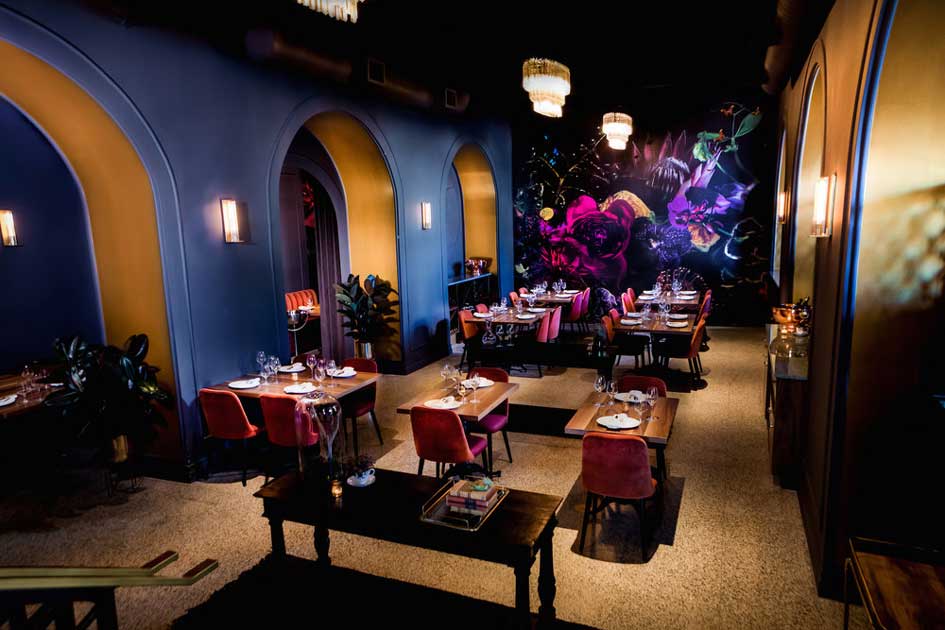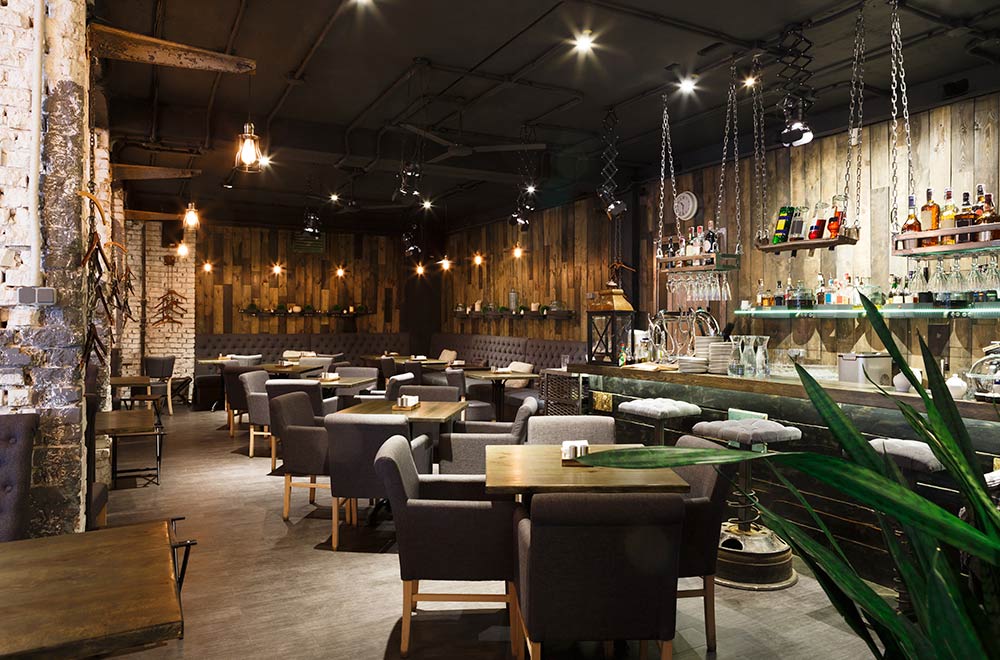Instagrammable Restaurants Islamabad: Picture-Perfect Dining Knowledge
Instagrammable Restaurants Islamabad: Picture-Perfect Dining Knowledge
Blog Article
Savor Authentic Asian Cuisine With a Pan-Asian Twist for a Cooking Journey
Starting a cooking journey via authentic Oriental food, boosted with a Pan-Asian spin, provides an one-of-a-kind opportunity to check out the rich tapestry of tastes that define the area's varied culinary traditions. This experience welcomes you to appreciate the exquisite equilibrium of preferences-- wonderful, salty, spicy, and sour-- harmonized by fragrant natural herbs and flavors. Envision the innovative fusion of Thai curry and ramen or the unforeseen pleasure of sushi burritos. As you contemplate these enticing dishes, think about the social stories and historical influences that shape them, each bite offering a story waiting to be discovered.

Checking Out Pan-Asian Tastes
In the world of worldwide gastronomy, Pan-Asian cuisine sticks out for its amazing diversity and the harmonious interaction of flavors from different Oriental societies. This cooking technique celebrates the one-of-a-kind components and rich customs found throughout the continent, producing a tapestry of tastes that is both rewarding and appealing. Secret to Pan-Asian food is its capability to stabilize different flavors-- wonderful, salted, spicy, and sour-- while highlighting the quality and high quality of each ingredient.
From the umami-rich soy sauce of Japan to the fiery chili peppers of Thailand, Pan-Asian food uses a substantial scheme of tastes. These components are commonly combined in innovative methods, improving recipes with layers of intricacy. For example, the use of fragrant herbs such as lemongrass and cilantro, typical in Vietnamese and Thai cuisine, includes a refreshing brightness to meals, while the consolidation of coconut milk provides a luscious, rich texture.
The focus on fresh produce and fragrant spices makes sure that each dish is not just a banquet for the taste but likewise for the senses. Pan-Asian cuisine welcomes restaurants to begin on a cooking journey, checking out the substantial and differed landscapes of Asian gastronomy with every bite.
Fusion Dishes to Try
While Pan-Asian food is commemorated for its traditional tastes, the modern-day cooking landscape is progressively embracing blend recipes that mix these classic aspects with influences from other areas. This innovative technique not just honors the rich heritage of Eastern cookeries however additionally introduces novel preference experiences that appeal to contemporary tastes.
An archetype of such a combination dish is the Korean-Mexican taco, where seasoned bulgogi beef is covered in a warm tortilla, topped with kimchi and a spicy gochujang-infused salsa. This mix marries the bold, mouthwatering tastes of Korea with the dynamic, fresh elements of Mexican cuisine. In a similar way, sushi burritos have gotten popularity, integrating the fragile artistry of Japanese sushi with the hearty, hand-held ease of a burrito, commonly featuring combination active ingredients like tempura shrimp and avocado with a drizzle of wasabi mayo.
One more significant dish is Thai curry ramen, which instills the luscious, aromatic seasonings of Thai curry into the calming broth of standard Japanese ramen, developing a harmonious blend that tantalizes the detects. These fusion meals expand beyond simple uniqueness; they represent a cooking dialogue in between societies, motivating expedition and development on the planet of Pan-Asian cuisine.
Essential Ingredients and Flavors
To truly appreciate Pan-Asian food, one have to comprehend the necessary active ingredients and seasonings that develop its structure. This diverse cooking style draws from an abundant tapestry of Asian customs, utilizing an unified mix of tastes and appearances. Secret ingredients include soy sauce, fish sauce, and oyster sauce, which give a tasty umami depth important to Eastern recipes. Corresponding to these are rice vinegar and mirin, offering a fragile acidity and sweetness.
Aromatic elements are pivotal, with ginger, garlic, and lemongrass being ubiquitous across different Pan-Asian dishes. These ingredients offer a great smelling base that enhances the complexity of flavors. Spices such as celebrity anise, cardamom, and cinnamon china chef introduce heat and personality, echoing influences from regions like China and India.

Food Preparation Techniques and Tips
Understanding the art of Pan-Asian cuisine calls for familiarity with its distinct cooking methods, each contributing to the vibrant tapestry of tastes this cooking practice is celebrated for. Central to these methods is the stir-fry, a rapid food preparation strategy that protects the nutritional integrity and vibrant shades of active ingredients. Making use of a frying pan, the stir-fry technique enables even warm circulation, essential for attaining the particular texture and taste balance of Pan-Asian meals.
Another basic strategy is steaming, particularly prevalent in Chinese food. This gentle method maintains the natural flavors and nutrients of components, making it excellent for seafood and vegetables. Dumplings, a cherished staple, frequently profit from steaming, leading to soft, delicious structures.
Barbecuing, additionally indispensable, imparts smoky depths to recipes such as Oriental bulgogi or Japanese yakitori (asian fusion restaurant). This strategy often includes seasoning components, permitting flavors to penetrate deeply prior to food preparation over an open flame or warm plate
Lastly, mastering the art of stabilizing tastes-- pleasant, sour, salted, bitter, and umami-- is critical. Appropriately layering these elements can boost why not find out more a meal from common to remarkable, supplying a complicated and satisfying culinary experience that personifies the significance of Pan-Asian cuisine.
Eating Experiences Worldwide
Around the world, Pan-Asian food provides an unmatched eating experience, commemorated for its abundant tapestry of tastes and lively discussions. This cooking sensation has transcended cultural boundaries, catching the hearts and tastes buds of food lovers worldwide. In multicultural cities fresh York, London, and Sydney, Pan-Asian dining establishments function as melting pots where cooking practices from Thailand, Japan, China, and past converge, supplying diners with an eclectic mix of meals that highlight the region's variety.
The international allure of Pan-Asian food depends on its ability to use both authenticity and innovation. Chefs masterfully wed traditional components such as lemongrass, soy sauce, and miso with modern methods, causing meals that are both refreshingly new and familiar. This combination allows restaurants to embark on a culinary trip that respects heritage while welcoming modernity.
In addition, eating experiences are boosted via attentively made settings that mirror the principles of Pan-Asian looks. From minimal Japanese-inspired insides to lively Thai-themed rooms, each dining establishment uses an one-of-a-kind setting that enhances the cooking offerings. Because of this, clients are not merely taking in a dish but partaking in a cultural experience, making Pan-Asian dining an absolutely global sensation.
Verdict
The exploration of Pan-Asian food supplies a profound understanding of the elaborate interplay of flavors and culinary customs throughout Asia. By accepting fusion dishes such as Thai curry ramen and sushi burritos, the cooking journey not just highlights the versatility of conventional active ingredients but also showcases cutting-edge modern-day techniques. This gastronomic experience, enhanced by cooking techniques and important seasonings, offers an one-of-a-kind possibility to value the multiculturalism and cooking creativity that specify Pan-Asian food on a worldwide scale.
Getting started on a cooking journey through genuine Asian food, enhanced with a Pan-Asian twist, offers an unique possibility to explore the abundant tapestry of flavors that specify the region's varied culinary customs.In the realm of international gastronomy, Pan-Asian cuisine stands out for its remarkable variety and the harmonious interaction of flavors from numerous Asian societies. Key to Pan-Asian cuisine is its ability to stabilize contrasting tastes-- pleasant, salty, spicy, and sour-- while highlighting the freshness and top quality of each ingredient.

Report this page